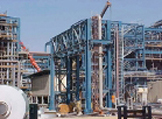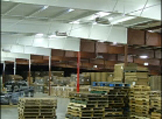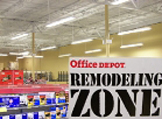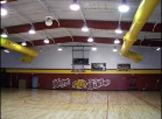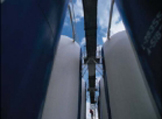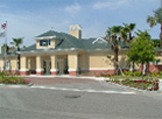Painting Terms

Learn Painting Terms - B
Browse Our Painting Terms
Back Prime - When a coat of paint is applied to the back of woodwork and exterior siding to prevent moisture from entering the wood and causing the grain to swell.
Backer Rod - An extruded foam rod that is typically placed in joints that are deeper than 1/2" (12.5 mm) to fill in some of the space before the sealant is applied. Foam backer rods come in a variety of diameters, ranging from 1/8" (3 mm) to 3/4" (20 mm).
Ball Mill - A horizontal, cylindrical milling machine which rotates to mix paint pigments and carrier vehicles.
Baluster - (1) A short vase-shaped supporting column or member. (2) A support for a railing, especially one of the upright columns of a balustrade.
Balustrade - A railing or parapet consisting of a handrail on a base member and sometimes interrupted by piers.
Barite (baryte) - A white mineral composed mainly of barium sulfate. It is the chief source of barium used in making paint.
Base - Tint base.
Benzene - Often used as a lacquer dilutent. Highly volatile and a fire hazard in shipping and storing.
Bid - A written document that spells out exactly what the painting contractor will do and the exact amount of money he or she will charge. Make sure you understand everything in this bid and keep a written copy.
Binder - Solid ingredients in a coating that hold the pigment particles in suspension and attach them to the substrate. Consists of resins (e.g., oils, alkyd, latex). The nature and amount of binder determine many of the paint's performance properties, washability, toughness, adhesion, color retention, etc.
Biocide - A biologically active paint and caulk additive designed to keep bacteria from spoiling the paint or caulk during storage; or to keep mildew from growing on the applied paint.
Bitumen - Asphalt found in a natural mineral or pitch state.
Bituminous Paint - (1) Originally, the class of paints consisting essentially of natural bitumen's dissolved in organic solvents. They may or may not contain softening agents, pigments, and inorganic fillers. They are usually black or dark in color. Within recent years, the term "bituminous" has, by common usage, come to include bitumen-like products such as petroleum asphalt. (2) A low cost paint containing asphalt or coal tar, a thinner, and drying oils; used to waterproof concrete and to protect piping where bleeding of the asphalt is not a problem.
Blast Cleaning - A physical process by which an object's surface is finished (roughened, or profiled) or cleaned or both by means of propelling an abrasive against it.
Blast Cleaning Abrasive - A fine, granulated material used for blast cleaning a surface, consisting of particles of controlled mesh sizes propelled by compressed air, water, or centrifugal force, and are used to clean and roughen a surface. Blast cleaning abrasives often are simply referred to as metallic or non-metallic and as shot or grit.
Bleaching - (1) The process of restoring discolored or stained wood to its normal color or making it lighter. (2) Loss of color, usually caused by exposure to sunlight.
Blistering - Bubbles formed in a painted surface caused by subsurface moisture resulting from poor surface preparation techniques.
Block Filler - A thick, paint-like material used to smooth out very rough masonry surfaces like cinder block. It is generally brush-applied, then painted.
Block Resistance - The capability of a coating to resist sticking to itself when used on two surfaces that come into contact with each other, e.g., door and jamb; window sash and sill.
Blocking - Two painted surfaces sticking together when pressed together, such as doors and windows. Usually caused by pressing newly painted surfaces together before completely dry; excessive paint; or recoat before the first coat is dry.
Blooming - A thin film that reduces the gloss on painted or varnished surfaces, caused by the presence of humidity while a surface is being finished.
Blue Flu - Hangover.
Blue Lead - A bluish rust preventer which contains lead sulfide and carbon.
Blushing - A bloom or gray cloudy film appearing on a newly finished surface on humid days. This effect is usually caused by the condensation of moisture or by the too rapid evaporation of the solvents.
Body - The consistency of liquid paint, or solidity of the dried paint film.
Boiled Linseed Oil - Linseed oil is boiled to temperatures from 400 to 600 degrees F, then a small quantity of a drier (lead monoxide or manganese dioxide) is added to promote quick drying of a newly painted surface.
Boiled Oil - Linseed (sometimes soya) oil that was formerly heated for faster drying. Today, chemical agents are added to speed up the drying process.
Boiling Point - Point at which a substance boils; for water, 212 degrees F or 100 degrees C.
Bolt - Wallcover material can be purchased by the bolt. A bolt is usually two or three roll lengths of wallcover, but may be more. Sometimes referred to as yardage goods.
Bond - If a contractor damages something during the course of a job and fails to pay for court-ordered damages within a certain amount of time (often 30 days), the bond provides payment. These are intended more as an incentive for contractors to pay for damages than being a comprehensive safety net for homeowners, so make sure your contractor is also insured.
Boneyard - An area where building parts are painted prior to installation.
Boxing - Pouring paint from container to container to insure proper mixing of all components.
Breathe - Permit the passage of moisture vapor through a paint film without causing blistering, cracking or peeling.
Bridging - The covering or filling of a gap, pore, crack or void in a surface by a film.
Bright - Unstained.
Brightness - The degree of lightness of any surface emitting or reflecting light.
Bristle - The working part of a brush containing natural bristles (usually hog hair) or artificial bristles (nylon or polyester).
Bristle Brush - Refers to paintbrush fibers that are natural in their origin, like hog bristle. Suited to oil-based paints but not suggested for latex paints.
Brittleness - The lack of resistance to cracking or breaking of a paint film when bent or flexed.
Bronzing - Applying a liquid paint vehicle which contains a metallic powder.
Brush - A tool used to apply paint. There are many types of brushes available, and selecting the right one is important to the finished product. "Brush" is also used to describe how paint will be applied (i.e., brushed, rolled, sprayed, etc.)
Brush Hand - Slang term for an expert brush painter.
Brush Marks - Marks of brush that remain in the dried paint film.
Brushability - The ability of a liquid to be applied to a surface with a brush. Brushable paints are not thick and gooey and join easily to the previously-applied paint coating.
Brushing - Applying paint with a brush.
Brushfore - This is what you tell the apprentice to go and get from your van, after an unsuccessful search he will come back and ask, " What's a Brush for?" This is when you tell him that he may be better off in another career since he doesn't know what a Brush is for.
Brushing Lacquer - A slow-drying lacquer which doesn't show brush marks.
Brush-Out - A technique sometimes used to influence a large sale that consists of brushing out a sample of paint onto a slab of wood or other material so the customer can see how the finished job will look.
Bubbles - Air bubbles in a drying paint film caused by excessive brushing during application or by over vigorous mixing that results in air entrapment.
Bubbling Blisters - Caused by air below a painted surface.
Build (Or Film Build) - The thickness that a paint tends to be applied in, when using the normal application technique for that paint.
Build-Up - A thick surface created by successive layers of coatings.
Building Element - The physical parts of building construction. These may be individual materials, assemblies of materials, equipment, or assemblies of materials and equipment.
Building Envelope - The entire exterior surface of the building, including foundations, walls, doors and windows, which encloses or envelopes the space within.
Building Insurance - Insurance covering the structure of the building.
Building Shell - The skeleton of a building to which the finished exterior and interior are applied. It includes the building foundation.
Building Skin - The exterior materials that cover a building's shell.
Built Environment - All human-built structures (as opposed to the natural environment).
Burning-In - Repairing a finish by melting stick shellac into the damaged places by using a heated knife blade or iron.
Burning-Off - Removing old paint by heating with a torch and scraping it off while hot.
Burnishing - The formation of shiny areas on a painted surface, as a result of rubbing or washing.
Burnt Sienna - A yellow pigment which turns reddish brown when burnt.
Burnt Umber - A dark yellow pigment which turns medium brown when burnt.
Butadiene - A gas which is chemically combined with styrene to create a resin used in latex binders, styrene-butadiene.
Butt Joint Work - Wallcovering work where the wallcover is placed edge to edge without overlapping.
Call Now - 1.800.354.9165 - Toll Free

